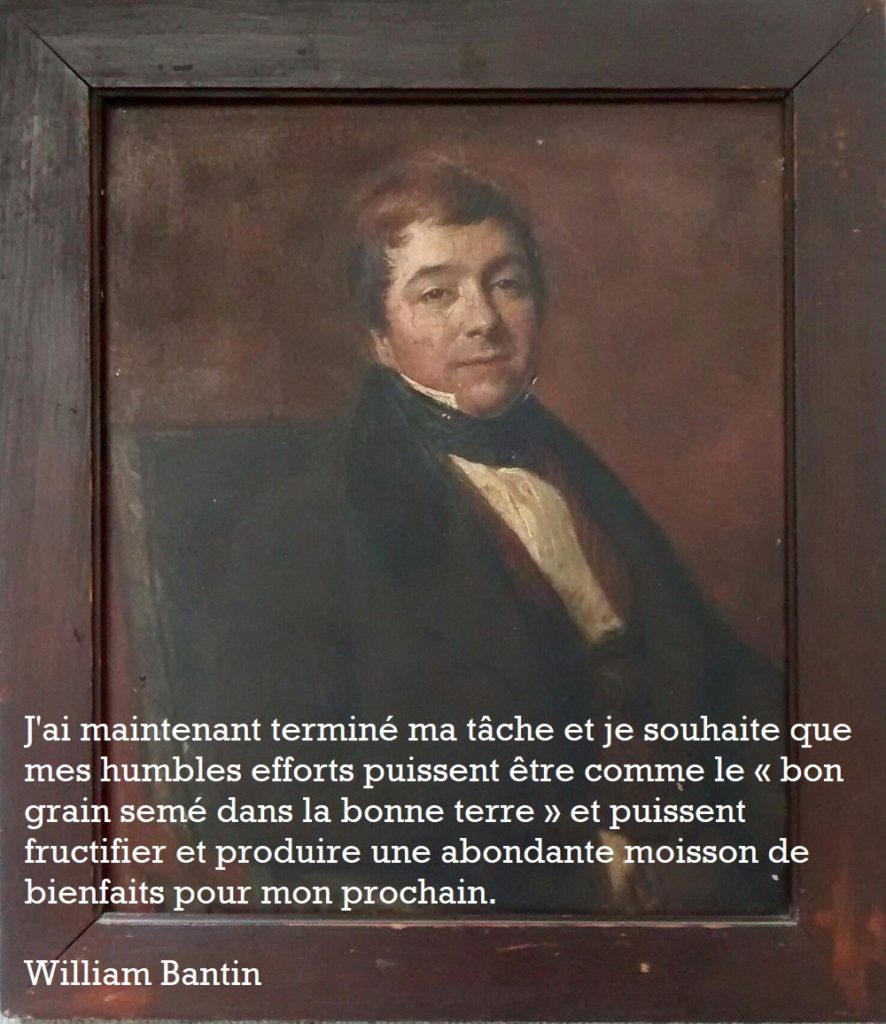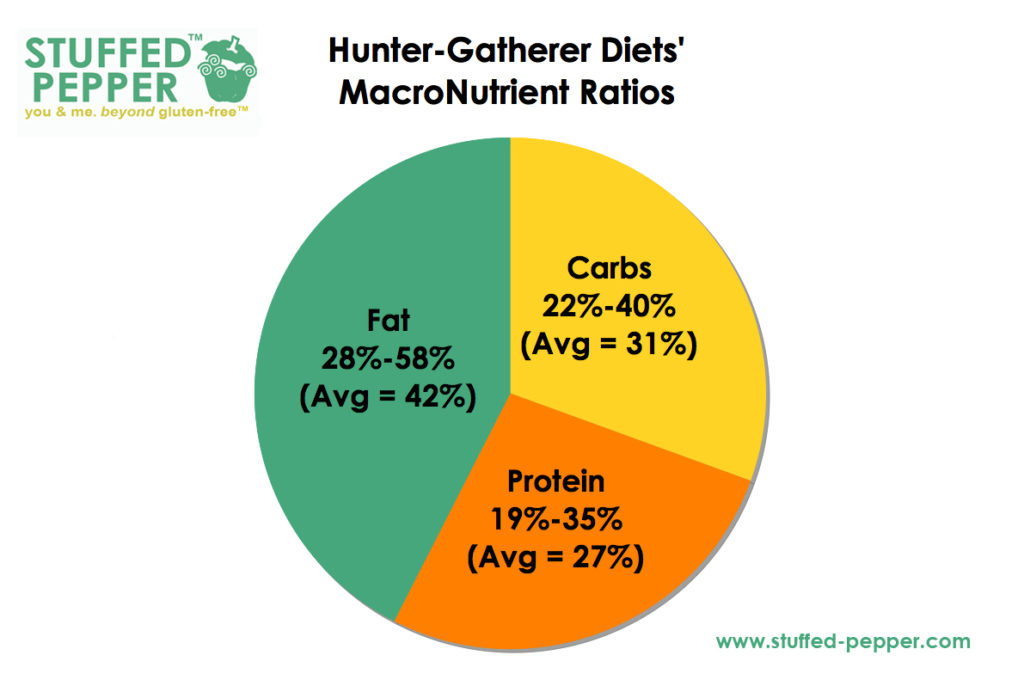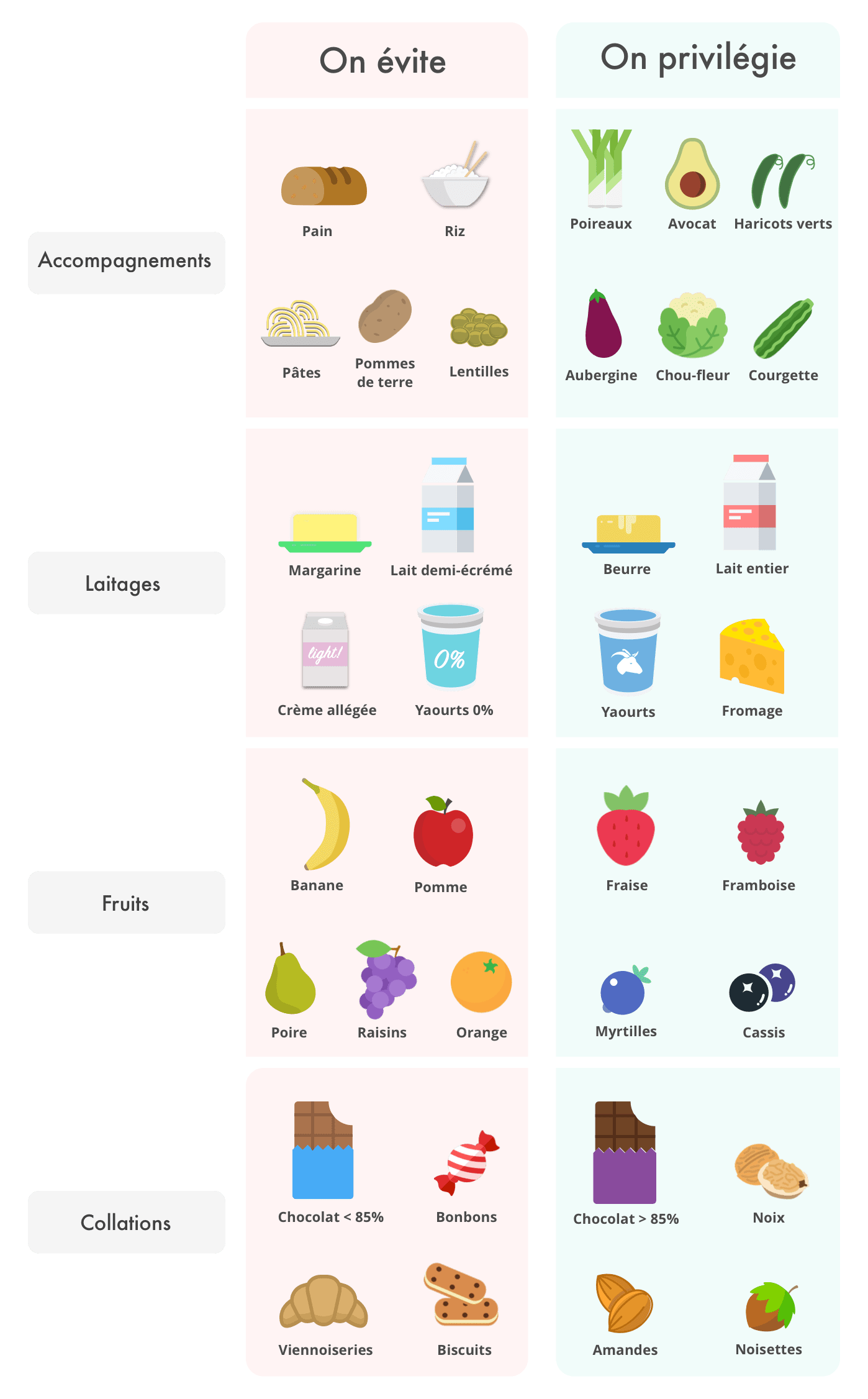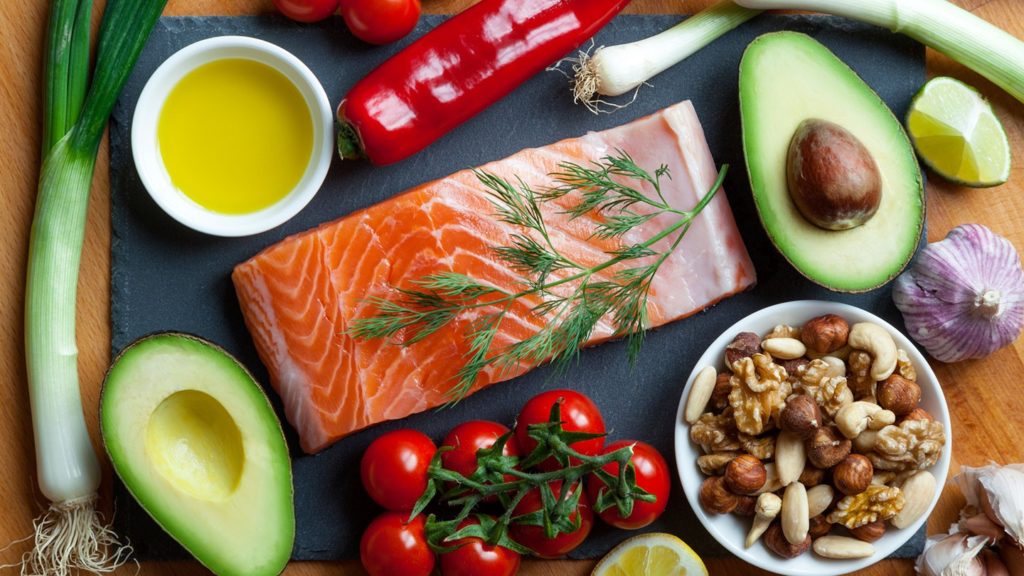The Low Carb High Fat (LCHF) diet tends to ketogenic is one of the three pillars of Blooness power supply. But what does that mean? LCHFand what did we learn from it for the Blooness project?
Table of contents
Hide- 1.Low Carb High Fat diet: definition
- 2.Ketogenic diet: definition
- 3.What are the advantages of such a plan?
- 4.The origins of the low-carb diet
- 5.Why can the LCHF diet help you lose weight?
- 6.Do carbohydrates make you fat?
- 7.Back to basics and the link with the Paleolithic diet
- 8.What to eat on a low carb / ketogenic diet?
- 9.How are macros distributed in low-carbon mode?
- 10.What are the dangers of LCHF diets?
- 11.The solution
- 12.Blooness = LCHF + Paléo + Blue Zones
Low Carb High Fat diet: definition
Visit LCHF diet (low-carbohydrate diet) carbohydrates) is a diet very low in carbohydrates, moderate in proteins and rich in lipidsideally those whose the ratio of omega 6 to omega 3 is in favour of omega 3.
In short, this is a plan designed to reduce sugary products and starchy foods as much as possible (bread, pasta, rice) for give preference to lipids insteadsuch as eggs, oily fish, shellfish, meat, vegetables and fruit. vegetablesnuts...
Find out more about this chapter in the ideal diet for mankind in PODCAST format:
Ketogenic diet: definition
The more radical version of the Low Carb diet is the ketogenic diet, where carbohydrates are reduced to less than 30g per daya plant used empirically by some doctors and nutritionists for its supposed virtues against certain chronic diseases such as epilepsy and cancer.
This content is part of the guide Blooness, the guide to the ideal human diet, the summary of which you can find here 🌱🥑
In the ketogenic diet, energy no longer comes from glucose at all, but from ketonesreleased by the liver, and whose synthesis is made possible by a high lipid intake, in the virtual absence of glucose.
Find out more about the ketogenic diet in the next chapter.
French-speaking subscribers will receive the newsletter in French, and all others will receive an English version.
What are the advantages of such a plan?
The advantages of LCHF plans are many:
- Rapid weight loss and good long-term weight stabilization.
- Feeling of satietyfewer cravings
- Wellness and less fatigue
- A rate of blood glucose bottom
- In the case of a good intake of omega 3 and omega 6 at the expense of omega 9: beneficial effects on overall health.
The origins of the low-carb diet
Visit low-carb would have been conceptualized in the 19th centurywhen a retired London mortician, answering to the name of William BantingHe was 66 years old, 1.65 m tall and weighed 100 kilos.
To combat his excess weight, he tried a number of strategies: exercising, cutting calories and even taking laxatives.
All these attempts were in vain.
It was then that his physician, William Harvey, inspired by lectures given in Paris by the French physician and physiologist Claude Bernard, recommended that he a sugar- and starch-free dietwhich he claimed helped diabetics regulate their blood sugar levels.
Gone are bread, beer, pasta, wheat, sweets and potatoes.. William Banting resolved to eat mainly meat and fish.
Result of the race, Banting lost 22kg after 16 months on a low-carb diet. He added that he had not "I haven't felt this healthy in twenty years"..

This was the beginning of a promising new way of eating that went against the grain of the agricultural revolutions.
Except that this type of diet wasn't something completely new, but rather ancestral: it was more or less the diet of certain tribes present in what we'll call in this guide the " Blue Zones "These are areas where the diseases known in developed countries are virtually non-existent, and where life expectancy is relatively high compared with living conditions.
Why can the LCHF diet help you lose weight?
Visit reducing carbohydrate intakeInsulin production also decreases. In the absence of a glycemic peak, there is no longer any storage of insulin. fatsThese are burned instead of glucose, which is in short supply.
By constantly ingesting carbohydrates, you train the body to use them first, as glucose is the preferred source of energy. As a result, fat burning doesn't take place.
Worse still, by consuming them disproportionately, as is the case in all Western diets, where carbohydrates often account for the majority of calories. macronutrientsthe body ends up storing them as fat!
In other words, it's not fat that makes you fat, it's sugar, carbohydrates and other foods that make you fat. cerealsThis is particularly true of foodstuffs such as bread, rice, potatoes, etc., if consumed in excessive quantities.
There is, however, one exception to this rule, when you've just done sport. In this case, you can eat carbohydrates and continue to burn fat. But more on that later...
Do carbohydrates make you fat?
That's the question that's causing a stir in sports and nutrition circles. Are carbohydrates responsible for excess weight? Do they prevent the body from drying out?
As we saw earlier, a high dose of carbohydrates leads to a rise in insulin, enabling blood sugar to be reduced. Not only can the repetition of this process lead to a decrease in insulin effectiveness, it is also naturally the cause of some storage of sugar, as fat, in adipose tissue.
The answer to this question is a matter, once again, of proportions. An excessive intake of carbohydrates is partly responsible for fat storage. Sugar, and carbohydrates more generally, would therefore create fat.
Back to basics and the link with the Paleolithic diet
One of the arguments in favor of the LCHF diet is that our consumption of carbohydrates completely exploded after the Second World War, to the point of unbalancing the ancestral distribution of our macro-nutrients.
Westerners draw about 55% of their energy from carbohydratesand the French National Nutrition and Health Program suggests that carbohydrates should account for more than 50% of our energy intake.
And yet, if we compare food Paleolithic to that of modern Western man, we can see that carbohydrate consumption by hunter-gatherers was much lower.

Moreover, in prehistoric man, these carbohydrates are mainly derived from natural sources (vegetables, fruit, nuts, seeds, etc.), and have nothing to do with refined carbohydrates as we know them today (cookies, soft drinks, white bread, white rice, pasta...).
We can therefore assume that by eliminating the intake of "bad" carbohydrates, and favoring "good" carbohydrates, we tend towards the diet of our ancestors and avoid upsetting thousands of years of evolution.
In any case, this is one of the postulates of many pro-LCHF and pro-Keto people.
What to eat on a low carb / ketogenic diet?
Foods rich in fat should be preferred:
- Good oils: olive, rapeseed, coconut, walnut, etc.
- Meat, fish and eggs
- Nuts and seeds: walnuts, hazelnuts, almonds, cashews, pistachios, pecans, chia seeds, sesame seeds
Moderate protein intake, both animal and vegetable, and limited carbohydrate intake.

How are macros distributed in low-carbon mode?
On a "classic" Western diet, we consume a majority of carbohydrates, and around 30% of lipids and 15/20% of proteins.
On a low-carb diet:
- we'll have a majority of lipids (between 60 and 80%);
- a moderate but significant protein intake (15/20%);
- and a very low carbohydrate intake (around 5%).
Carbohydrate intake should not exceed 150g/day in low-carb. On a ketogenic diet, we would be between 5 and 50g / day.
What are the dangers of LCHF diets?
There are certain pitfalls to practicing a low-carb diet, whether in its "soft" version, LCHF, or worse in its "hard" version, LCHF. keto (ketogenic in English).
Low-quality lipids
One of the main pitfalls is to replace carbohydrates with low-quality fats. For example, some people prefer animal fat from bacon, red meats, dairy and industrial products, forgetting about quality fat and fibers from small fish, oils, nuts, avocados, broccoli, cauliflower, asparagus, etc...
The omega 3 / omega 6 ratio
The other danger of the LCHF diet is that it favors too high an intake of omega-6s, to the detriment of omega-3s and omega-9s. To find out more, I refer you to the chapter devoted to this subject !
Good-quality carbohydrate deficiencies
Reducing your intake of fruits, vegetables and whole-grain products can lead to dietary deficiencies, including vitamins group B, in vitamin C, in beta-carotene, in calciumIt's also a good source of dietary fibre and antioxidants, if the food is not chosen wisely. As such, the chapter on vitamins will be a great help !
The solution
To help the body get the most out of the LCHF diet, fat intake should come mainly from polyunsaturated and monounsaturated fatty acidsThe idea is to create an appetizing, nutritious, balanced and varied diet. The idea is to create an appetizing, nutritious, balanced and varied diet, without sinking into food extremism.
On the other hand, link the LCHF diet with the paleolithic diet and feeding blue zones allows you to benefit from a complete intake and an absolutely unrivalled diet, devoid of any deficiencies.
The objectives are manifold:
- Prevent diseases of civilization, and at the very least delay them as far as possible (cancer, diabetes, cardiovascular disease, acne, allergies, etc.).
- Maintain an optimal, natural weight
- Get in better shape
- Achieve a feeling of well-being
This is the very essence of Blooness nutrition.
Blooness = LCHF + Paléo + Blue Zones
Now that the Low Carb High Fat diet holds no secrets for you, learn more about the paleo diet and feeding blue zonesthen you'll learn the basics of a new type of diet...
Next chapter: focus on the ketogenic diet
Previous chapter: Fat's return to favour


2 Responses
Hi, in the LCHF diet, when you talk about 150g/day of carbs, is it total carbs or net carbs (carbs - fiber)? Thanks 🙂
Hi, we usually talk about net carbs on the LCHF or Keto diet 🙂 I'll make an article about it soon, thanks for the idea!